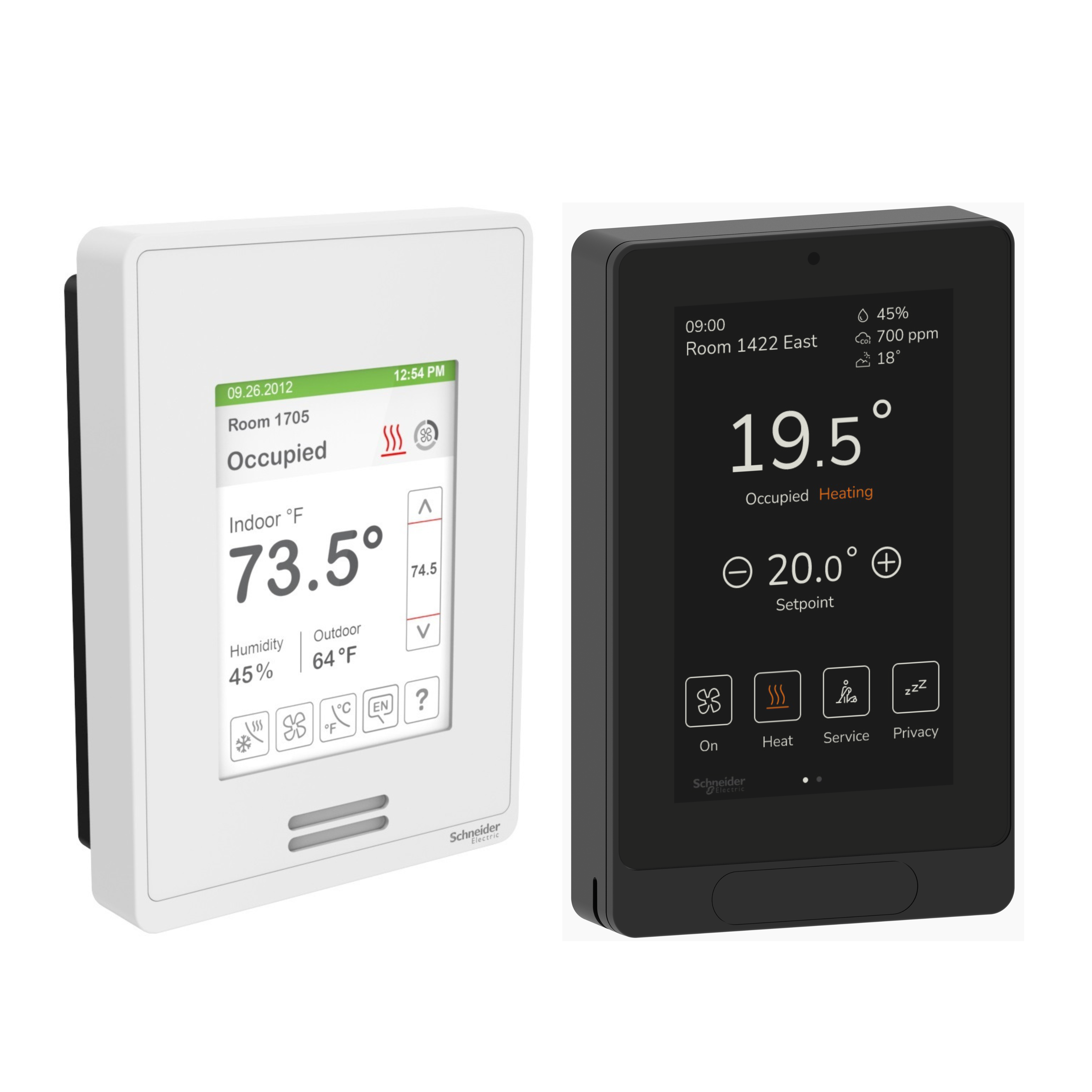Customer Success Story Showcase
Featured White Papers
Search Help





These valuable tools provide fast, easy and accurate product selection for your Room Controller applications. Matching products will update automatically based on your selections and requirements!
→ Connect now to mySchneider to discover the EcoXpert content ←

We understand that building owners want improved energy efficiency yet enhanced comfort. Our room controllers can deliver that.
Your customers can now take full control of their building’s HVAC whether retrofitting existing systems with technologically-advanced room controllers or opting for an easy-to-install and commission alternative for new projects. Our room controllers offer a simple yet powerful solution ideal for any of today’s commercial or retail buildings. Facility managers can benefit from a selection of built-in, application-specific control options, which have been designed to simultaneously increase the overall comfort of building occupants while reducing energy costs.
System Integrator Benefits
End-User Benefits
This Sales Enablement Kit covers the promotional materials, sales support and technical documentation for SpaceLogic Controllers, including SpaceLogic Touchscreen Room Controller, SE8000 and SE7000.
SpaceLogic™ Touchscreen Room Controller is designed to elevate user experience and modern room control, ensuring not only operational efficiency, but also a seamless, intuitive interaction. Discover the benefits of our new customizable room controller.
Oops! It looks like you don't have the proper user permissions to download this file.
If you believe you have received this error incorrectly, please let us know.




by Dusan Janjic
Office buildings waste up to 30% of the energy they consume. An upgrade from simple thermostats to networked integrated room controllers allows centralized control and monitoring of office energy use and environmental comfort. Such capabilities reduce energy costs and improve working conditions. This paper provides guidance for how room controllers can be networked to achieve a rapid return on investment (ROI) and continued long-term energy savings.

by Jason Estes
Whilst the traditional direct digital control approach to installing zone-level control has served contractors for many years, technological advances have changed the playing field. Today’s application-specific controllers integrate sensors, programming, and wiring into a single device, reducing installation time and labor costs by 75%. This paper explains how integrated controllers differ from traditional direct digital controllers, and the
advantages they offer.

by Bas Jansen
Building owners and operators face many challenges, and energy costs is one of the greatest. It’s estimated that 30% or more of energy used in commercial buildings is wasted. While building automation technology can help meet this challenge, the cost and complexity of these systems has been a roadblock to widespread adoption, especially for older buildings and smaller enterprises. New advances in wireless technology have changed this equation, offering new choices for building controls and management. This paper examines the advantages and disadvantages of
the major wireless standards, and how building owners can use wireless products to reduce energy costs.

by Francois Carle
Hotel guests and staff are not directly accountable for a hotel’s overall utility bill. As a result, room occupants
have little incentive to adopt energy-efficient habits. Yet, guest room energy consumption accounts for between 40 and 80% of energy use within the hospitality industry. In addition, industry data shows that guests remain outside of their rooms for several hours a day, on average. This paper analyzes room energy management approaches that accommodate both guest comfort and efficiency.

by Tim Doulgeropoulos
Schools spend more on energy than on any other expense except for personnel. Traditional building control systems reduce energy costs, but most school districts can’t afford them. New, intelligent room controllers enable energy cost reductions of up to 30% without requiring high, up-front investment. Grants may also be available from government and utilities to help reduce costs. This paper offers guidance on how schools can achieve ROI through greener operations.
The migration of EcoXpert Extranet content to mySchneider is nearly complete, and the new experience is officially LIVE.
Log in to mySchneider to access all essential assets and resources in one centralized location
